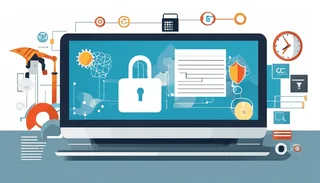Introduction to the CompTIA N10-008 Exam
The CompTIA N10-008 exam is a crucial certification for IT professionals seeking to validate their networking skills. As part of the CompTIA Network+ certification, this exam assesses a candidate’s knowledge of network infrastructure, troubleshooting, security, and operational procedures. Passing the N10-008 exam demonstrates proficiency in designing, managing, and troubleshooting wired and wireless networks.
One of the key topics covered in the exam is network troubleshooting, including ICMP Echo Requests and the tools used to perform network diagnostics. Understanding these concepts is essential for answering questions effectively and performing real-world networking tasks.
Definition of CompTIA N10-008 Exam
The CompTIA N10-008 exam is designed to test a candidate’s ability to configure, manage, and troubleshoot network devices. It covers various networking concepts, including:
- Network architectures (such as TCP/IP and OSI models)
- Network operations and security
- Network troubleshooting methodologies
- Wireless and wired network configurations
The exam is ideal for network administrators, IT support specialists, and system engineers who want to enhance their networking knowledge and career prospects. Understanding the core concepts of network troubleshooting, particularly ICMP Echo Requests, is fundamental to success in the exam.
Understanding ICMP Echo Requests
ICMP (Internet Control Message Protocol) Echo Requests, commonly referred to as "ping" requests, are fundamental for network troubleshooting. The ICMP protocol is used to diagnose network connectivity issues by sending echo requests to a target device and waiting for a response.
Key functions of ICMP Echo Requests:
- Determine if a device is reachable
- Measure response time between two network devices
- Identify packet loss or network congestion
ICMP Echo Requests are integral to diagnosing network issues and are a frequently tested concept in the N10-008 exam.
The Tool Used for ICMP Echo Requests
The primary tool used for sending ICMP Echo Requests is the 'ping' command. This command allows network professionals to verify connectivity between devices and diagnose latency or packet loss issues.
Syntax of the 'ping' command:
ping [IP address or hostname]
For example:
ping 8.8.8.8
This command sends ICMP Echo Requests to Google's public DNS server and returns response times if the connection is successful.
Common 'ping' parameters:
- -t: Continuous ping until manually stopped
- -n [count]: Specify the number of packets to send
- -l [size]: Adjust the size of packets sent
- -w [timeout]: Set a timeout for responses
Understanding the 'ping' command is essential for network troubleshooting and is frequently tested in the N10-008 exam.
How to Use the 'ping' Command
Using the 'ping' command is straightforward, and it is one of the first steps in diagnosing a network issue.
Steps to use 'ping':
- Open the command prompt or terminal.
- Type ping followed by the target IP address or hostname.
- Observe the response times and packet loss, if any.
Example of a successful ping:
Reply from 8.8.8.8: bytes=32 time=20ms TTL=118
Reply from 8.8.8.8: bytes=32 time=22ms TTL=118
A successful response indicates that the target device is reachable. If the request times out, there may be a connectivity issue.
Alternative Tools for Network Testing
While the 'ping' command is a fundamental tool, several other tools are useful for network diagnostics:
- Traceroute (tracert in Windows): Identifies the path packets take to reach a destination.
- Netstat: Displays active network connections and listening ports.
- Nslookup/Dig: Queries DNS records to verify domain name resolution.
- Wireshark: Captures and analyzes network traffic for in-depth troubleshooting.
- Pathping: Combines features of ping and tracert to detect packet loss along a route.
These tools complement the 'ping' command and provide deeper insights into network performance and security issues.
Exam Tips for Answering Network Troubleshooting Questions
The N10-008 exam includes multiple-choice and performance-based questions that assess troubleshooting skills. Here are some essential tips to help you answer network troubleshooting questions effectively:
- Understand ICMP Messages: Be familiar with different ICMP error messages like Destination Unreachable and Time Exceeded.
- Know the 'ping' Command: Be able to interpret ping results and recognize patterns of network failure.
- Use the OSI Model: Apply the OSI model to diagnose issues at different layers (e.g., checking physical connections before blaming IP configuration).
- Memorize Key Network Commands: Learn how to use traceroute, netstat, and nslookup for troubleshooting.
- Practice Performance-Based Questions: Work on real-world troubleshooting scenarios to build confidence.
Following these tips will improve your chances of passing the CompTIA N10-008 exam and succeeding in network troubleshooting tasks.
Conclusion
The CompTIA N10-008 exam is an essential certification for IT professionals aiming to advance their networking careers. Understanding ICMP Echo Requests, the 'ping' command, and alternative network diagnostic tools is crucial for both real-world networking tasks and exam success.
By mastering these concepts and practicing with network troubleshooting tools, you can enhance your skills and increase your chances of passing the N10-008 exam. DumpsBoss provides comprehensive study materials and practice tests to help you prepare effectively. Start your journey to becoming a certified network professional today!
Special Discount: Offer Valid For Limited Time “N10-008 Exam” Order Now!
Sample Questions for CompTIA N10-008 Dumps
Actual exam question from CompTIA N10-008 Exam.
What tool do we use to test our connection to the target with an ICMP echo request?
A. Traceroute
B. Ping
C. Netstat
D. Telnet


